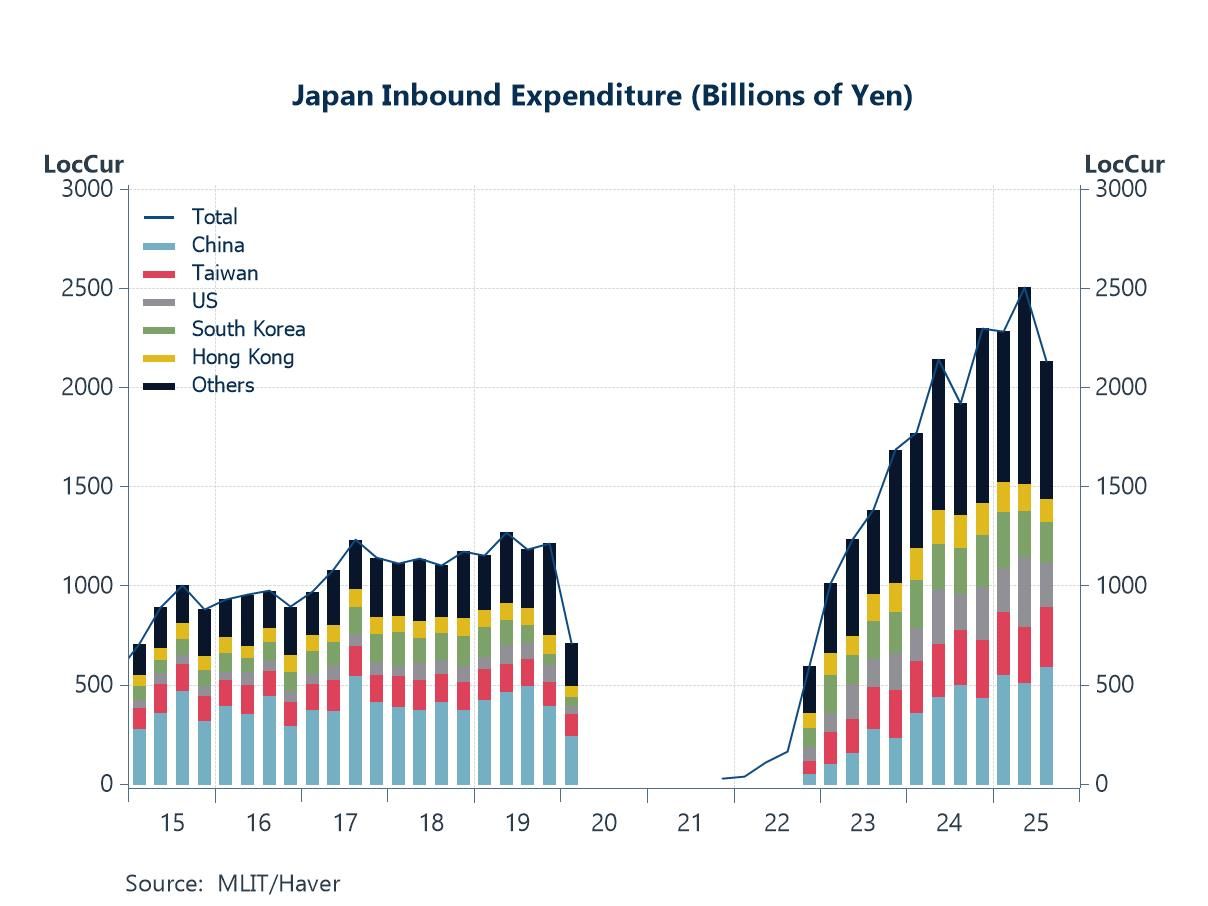U.S. Current Account Deficit Narrowed Slightly in Q4
by:Sandy Batten
|in:Economy in Brief
Summary
- Third largest quarterly deficit on record.
- Goods deficit widened to another record; services surplus widened slightly.
- Largest annual deficit in 2021 on record.


The U.S. current account deficit narrowed to $217.9 billion in Q4 2021 from an upwardly revised quarterly record of $219.9 billion (initially $214.8 billion) in Q3. This was the third largest quarterly deficit on record. The Action Economics Forecast Survey anticipated a $218.0 billion deficit. As a percent of GDP, the Q4 deficit narrowed to 3.63% from 3.79% (revised from 3.71%). For all of 2021, the deficit was a record $821.6 billion, up markedly from $616.2 billion in 2020.
The deficit in goods trade rose to a new record $283.4 billion in Q4 from a slightly downwardly revised $273.2 billion in Q3 (initially $274.8 billion) with exports up 7.1% q/q and imports rising 5.9% q/q. The quarterly rise in exports was led by a 11.6% q/q increase in exports of consumer goods excluding food and autos and a 10.3% q/q gain in auto exports. The quarterly gain in imports was led by an 8.9% q/q rise in imports of consumer goods excluding food and autos.
The surplus on services trade rebounded in Q4 after a sharp narrowing in Q3. It widened to $54.4 billion from a slightly downwardly revised $49.8 billion in Q3 (initially $49.9 billion). Services exports rose 5.5% q/q in Q4 while services imports increased 4.2%. Services exports were led by a 38.4% q/q jump in travel services as tourism revived. Services imports were led by a 9.8% q/q jump in transport imports, primarily sea freight imports, as inventories were being rebuilt.
The surplus on primary income widened to $44.2 billion in Q4 from $41.9 billion in Q3 and $38.7 billion in Q2. Investment income receipts gained 1.6% q/q, mainly reflecting a rise in investment income. Primary income payments edged up 0.9% q/q, mostly reflecting interest payments on long-term debt securities.
On the capital flow side of the ledger, the net US acquisition of foreign financial assets slowed sharply to $113.6 billion in Q3 from $448.6 billion in Q3 as new portfolio foreign investment actually declined in Q4. The net incurrence of US liabilities to foreigners also declined sharply to $224.4 billion in Q4 from $612.1 billion in Q3 with foreign net foreign purchases of US equities declining.
Balance of Payments data are in Haver's USINT database, with summaries available in USECON. The expectations figure is in the AS1REPNA database.


Sandy Batten
AuthorMore in Author Profile »Sandy Batten has more than 30 years of experience analyzing industrial economies and financial markets and a wide range of experience across the financial services sector, government, and academia. Before joining Haver Analytics, Sandy was a Vice President and Senior Economist at Citibank; Senior Credit Market Analyst at CDC Investment Management, Managing Director at Bear Stearns, and Executive Director at JPMorgan. In 2008, Sandy was named the most accurate US forecaster by the National Association for Business Economics. He is a member of the New York Forecasters Club, NABE, and the American Economic Association. Prior to his time in the financial services sector, Sandy was a Research Officer at the Federal Reserve Bank of St. Louis, Senior Staff Economist on the President’s Council of Economic Advisors, Deputy Assistant Secretary for Economic Policy at the US Treasury, and Economist at the International Monetary Fund. Sandy has taught economics at St. Louis University, Denison University, and Muskingun College. He has published numerous peer-reviewed articles in a wide range of academic publications. He has a B.A. in economics from the University of Richmond and a M.A. and Ph.D. in economics from The Ohio State University.




 Asia
Asia

